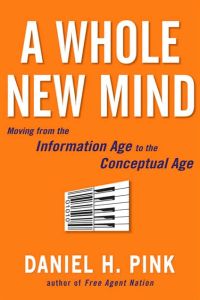Join getAbstract to access the summary!

Join getAbstract to access the summary!
Daniel H. Pink
A Whole New Mind
Moving from the Information Age to the Conceptual Age
Riverhead, 2005
What's inside?
The future is knocking. Have your right brain open the door, ready to tell stories, see the big picture and find meaning.
Recommendation
This fun, exciting read suggests many ways to develop your "right-brain" thinking - the kind of relationship-based thought patterns that author Daniel Pink argues will be essential in the emerging "Conceptual Age." Pink draws examples from numerous disciplines, industries and locations. The result is thought-provoking and applicable. getAbstract recommends this work to individuals and companies committed to change and open to originality; its tools will raise your capacities. Pink’s reasoning about the forces shaping this new age is striking in its simple rigor, as are the questions he offers that let you check how ready you and your business are for the economy that is emerging. His emphasis on the positive is the book’s one weakness. He doesn’t really address how trauma or turmoil would affect the driving forces of the Conceptual Age. Also, he only briefly touches upon those aspects of business where right brain thinking is hard to apply. What’s here is good, but what’s left out is somewhat troubling.
Summary
About the Author
Daniel H. Pink is a contributing editor for Wired magazine. He has written on social trends for print and electronic venues, and is the author of Free Agent Nation.





















Comment on this summary